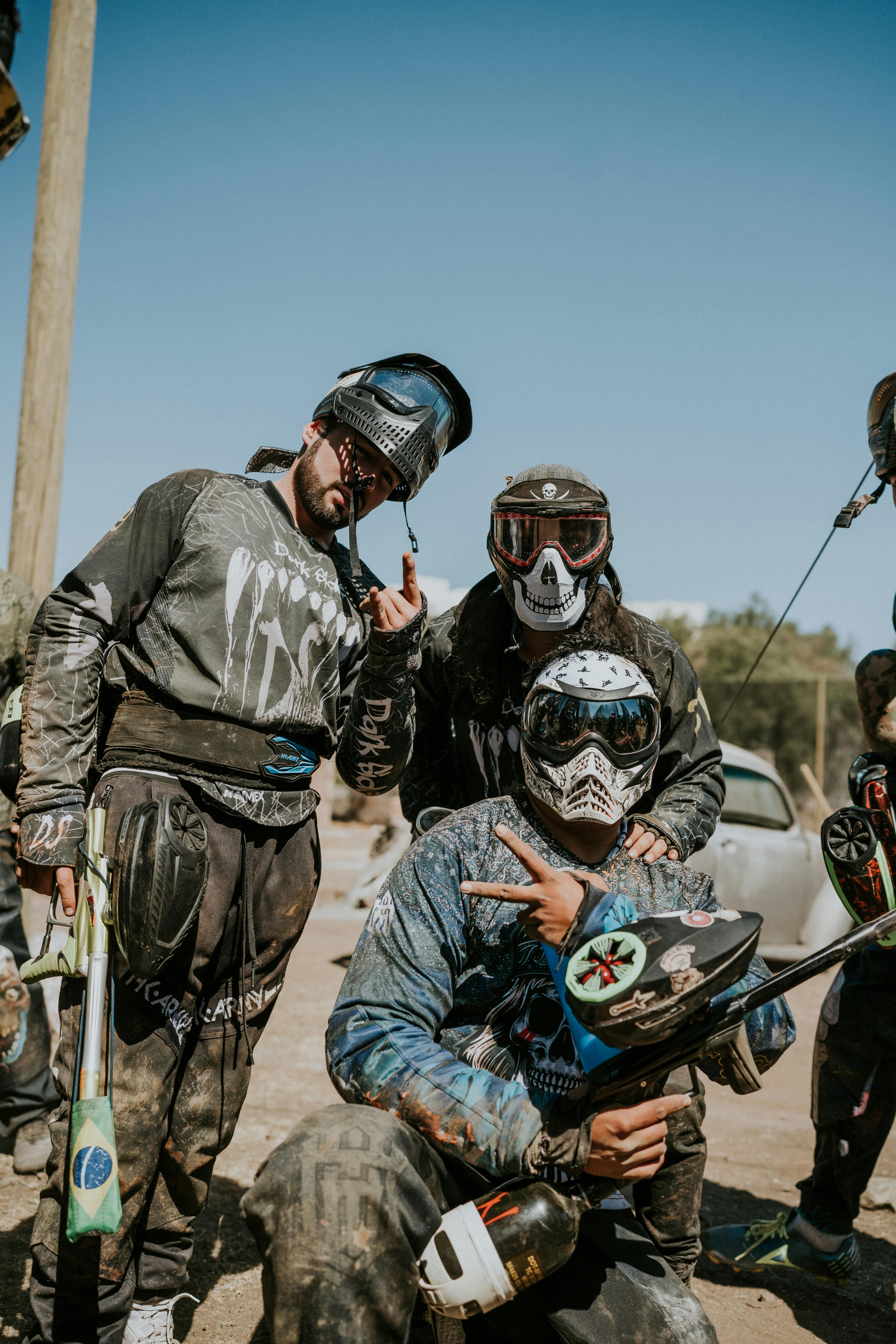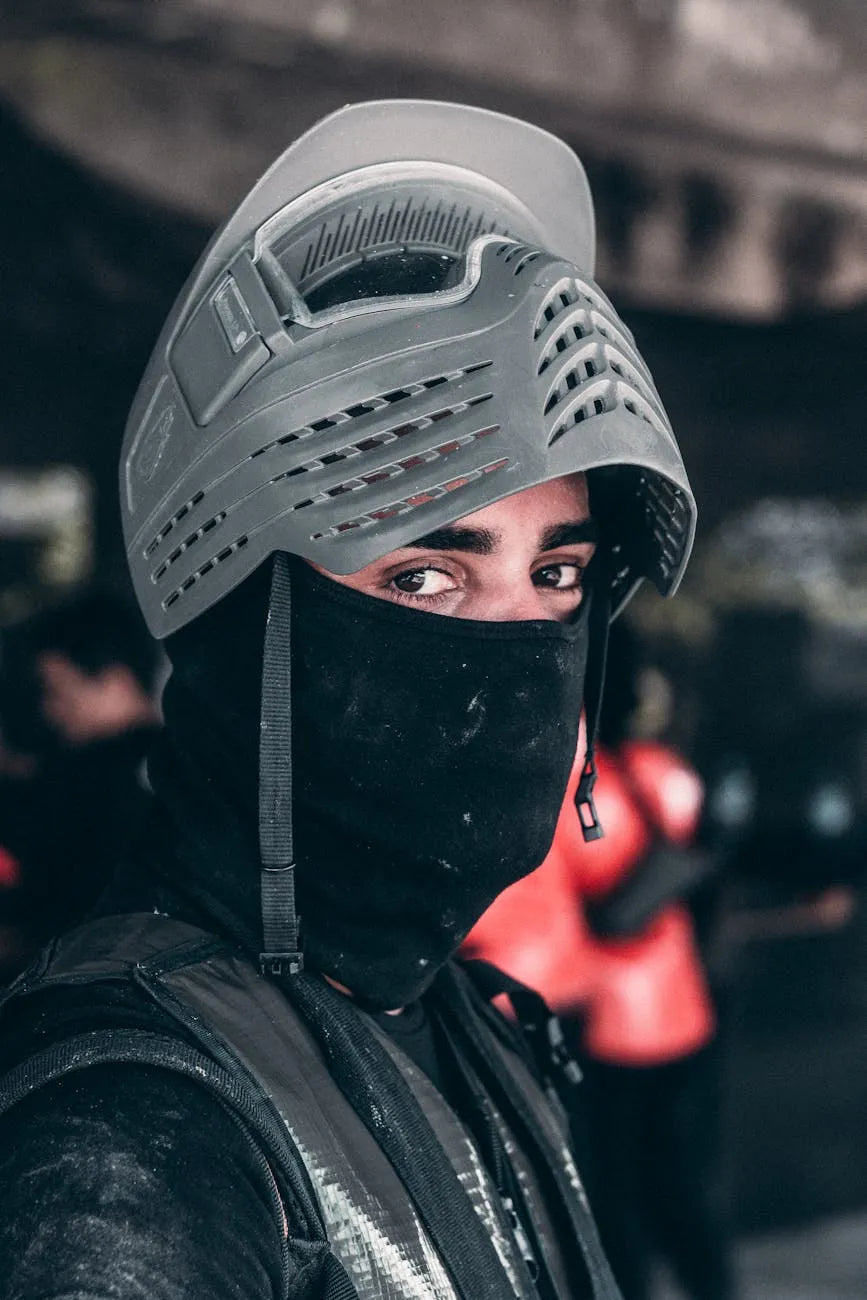2025 Paintball Tournament Timeout Strategies 5 Second Rule Tactics
The whistle’s shriek sliced through the arena like a blade. Five seconds. That’s all we had to recalibrate our entire defense after a catastrophic miscommunication cost us a 12-point lead. My goggles fogged—again—and my prescription glasses underneath slipped sideways, warping the field into a surrealist painting. I shouted adjustments to my team, but my voice drowned in the chaos. By the time I wiped my lenses, the timeout ended. We lost.
This wasn’t just a failure of strategy—it was a failure of vision.
The Price of Blurred Lines: Why Timeouts Demand Surgical Precision
Paintball’s temporal constraints turn timeouts into high-stakes chess matches. Coaches must execute substitutions, adjust equipment, and redesign plays within a window shorter than most TikTok videos. But here’s the brutal truth: if your gear isn’t battle-ready, even the savviest tactics crumble.
During my pro career, I watched teams hemorrhage advantages because of:
- Fogged lenses distorting critical sightlines
- Unstable eyewear shifting during sprints
- Delayed substitutions caused by fiddling with ill-fitting gear
In 2021, I learned this lesson the hard way. Mid-timeout, my fogged glasses misled me about an opponent’s position. I flanked left—straight into a point-blank shot. The viral clip still haunts me.

The 5-Second Blueprint: Turning Panic into Protocol
1. Frame the Battlefield: Legal Compliance in Half a Breath
Tournament rules demand all substitutions and equipment adjustments conclude within timeout countdowns. A single strap adjustment lingering past the buzzer risks delay penalties.
Solution:
- Modularize gear: Use inserts with universal compatibility (e.g., Overo Prescription Goggle Inserts) that snap into any goggles—Oakley, Smith, Giro—eliminating mid-game compatibility checks.
- Pre-set configurations: Assign players numbered insert kits (anti-fog vs. low-light coatings) for rapid swaps.
2. Simplify to Amplify: Cognitive Bandwidth Management
Under time pressure, complexity kills. My team adopted a “3-2-1” hierarchy:
- 3 adjustments max per timeout (e.g., one substitution + two positional shifts)
- 2 visual signals (hand signs, wristband diagrams)
- 1 verbal command (to override noise)
We drilled these until they became muscle memory. At the 2023 Southwest Open, we executed a full defensive realignment using only elbow taps and a coded nod—all within 3.8 seconds.
3. Vision as Armor: The Overlooked Tactical Layer
Your goggles aren’t accessories—they’re your HUD. Yet most players treat them as afterthoughts. During a rain-soaked match last year, my Overo inserts’ anti-fog coating kept my sightline crisp while rivals blindly wiped lenses. We exploited their blindness with a silent “ghost rush” play, ambushing their flank undetected.
Key specs matter:
- CR39 lenses: Block UV/blue light without distorting colors (critical for spotting camo patterns).
- Adjustable height: Ensures inserts align perfectly with your goggles’ curvature, eliminating blind spots.

Case Study: How a College Team Mastered the Clock
CU Boulder’s squad once hemorrhaged 74% of leads post-timeout. Their flaw? Wasting seconds adjusting gear. After adopting Overo inserts and standardized hand signals, their timeout efficiency jumped 41%.
Their workflow:
- Second 0-1: Captain signals primary substitution via raised fingers (e.g., three fingers = third reserve enters).
- Second 1-3: Players swap inserts/gear using magnetic clips (no fumbling).
- Second 3-5: Coach projects mini whiteboard with encrypted play codes (e.g., “Yellow Door” = inverted defense).
Result? They clawed back a 19-point deficit at Nationals using two timeouts.
Why Your Current Gear Is Failing You (And How to Fix It)
Most paintballers cling to:
- Contacts: Dry eyes + dust = blurred vision by halftime.
- Standard glasses under goggles: Fog factories with fracture risks.
- Cheap inserts: Static heights force uncomfortable compromises.
Overo’s Prescription Goggle Inserts solved these for me:
- Zero fog: Even in Louisiana’s swampy tournaments.
- Adjustable frames: Shift vertically to match my goggles’ profile.
- CR39 optics: Crisper than my $800 everyday glasses.
A client—a veteran coach—recently told me, “These inserts turned our weakest rookie into a sniper. She finally sees the whole field.”

The Future Is Clear: Adapt or Get Eliminated
The 2025 season will reward those who treat vision as a strategic variable. As paintball evolves, so must our gear.
Your homework:
- Audit your timeout workflow with a stopwatch.
- Replace fog-prone gear with modular inserts.
- Drill silent signals until they’re instinctive.
Remember: Five seconds is an eternity—if you see it clearly.
Equip your team with Overo Prescription Goggle Inserts ($119.99)—where tactical clarity meets bulletproof engineering.
Frequently Asked Questions
What is the "5-second rule" in paintball timeouts?
The "5-second rule" refers to the hyper-efficient use of the limited timeout period in paintball, focusing on critical adjustments, substitutions, and clear communication within five seconds to optimize performance during gameplay.
Why is vision considered a tactical element in paintball?
Clear vision in paintball directly impacts situational awareness, play execution, and reaction speed. Fogged lenses or ill-fitted eyewear can distort visibility, causing strategic missteps. Optimized gear, like Overo Prescription Goggle Inserts, ensures players maintain sharp field vision.
What are Overo Prescription Goggle Inserts?
These are modular, anti-fog, adjustable prescription lens inserts designed to fit different goggles. They enhance visibility and prevent common issues like fogging, glare, or misalignment, improving paintball players' overall performance.
What are some recommended timeout strategies to improve efficiency?
Effective strategies include limiting adjustments to a few key actions ("3-2-1" hierarchy), simplifying communication with clear visual and verbal signals, and standardizing gear setups to minimize delays during timeouts.
How can I implement this blueprint into my paintball team?
Start by auditing your team’s current timeout practices with a stopwatch. Replace unreliable equipment with high-performance gear, like anti-fog inserts, and adopt silent signal systems. Regular drills will help make these processes instinctive.



Share:
7 Essential Rules for Playing King of the Hill Paintball in 2025
5 Sustainable Paintball Innovations Transforming Eco-Friendly Play by 2025